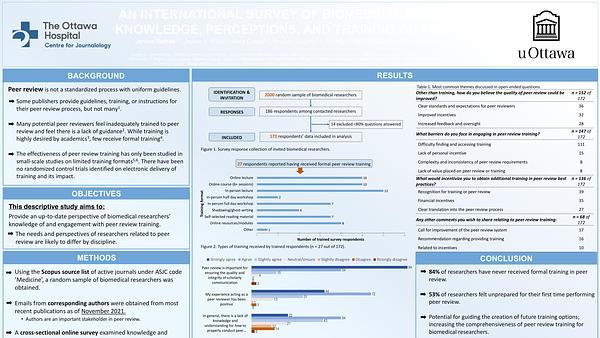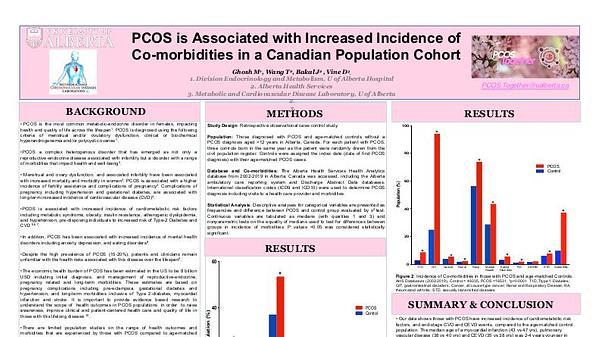Would you like to see your presentation here, made available to a global audience of researchers?
Add your own presentation or have us affordably record your next conference.
keywords:
pandemic science
reporting guidelines
editorial and peer review process
Objective The inclusion of duplicate publications in systematic reviews (SRs) has led to repeated patient information (RPI).1,2 Repeated patient information in SRs is the inclusion of a patient’s information multiple times, with the assumption that they are different participants. This could result in the overestimation or underestimation of results, which can lead to substantial clinical implications through misleading estimates.1 A proportion of studies with shared timing and location was identified in SRs by evaluating an early-stage sample of COVID-19 SRs. According to the International Committee of Medical Journal Editors, a duplicate publication overlaps substantially with a published article without clear reference to the initial publication.3 The proportion of studies with shared characteristics that could suggest RPI was assessed in this study.
Design This study was an umbrella review of SRs with clinical data for patients with COVID-19. An experienced librarian performed a comprehensive search strategy for peer-reviewed articles in the English language published between December 1, 2019, and April 6, 2020, in databases that included Ovid MEDLINE In-Process & Other Non- Indexed Citations, Ovid MEDLINE, Ovid Embase, Ovid Cochrane Central Register of Controlled Trials, Ovid Cochrane Database of Systematic Reviews, and Scopus. Studies included in SRs were grouped into clusters depending on characteristics including time frame and location. The frequency of studies that met the definition of at risk of including RPI was measured according to shared timing and location in the same SR.
Results Fifteen SRs were included, with a total population of 172,558 participants. A median (IQR) of 9 (6-20) studies were included in each SR, and 6 (2-10) studies included by each SR were considered at risk. Of these, 14 (93.3%) had risk of RPI. Subsequently, 103 clusters were generated. A median (IQR) of 3 (1-6) at-risk clusters were included in each SR. Eleven SRs (73.3%) included articles with RPI from a single hospital.
Conclusions Risk of RPI was prevalent in COVID-19 SRs published early in the pandemic, and RPI may also be common in SRs of topics outside COVID-19. The impact of RPI on SRs could dilute their validity. Statements about effect sizes should be made carefully, ensuring studies have carefully selected their population to include unique participants. The following are suggestions to improve the often-complex process of identifying RPI: (1) journals should ask authors to state if any data have been published and, if so, to provide a reference; (2) reporting guidelines (CONSORT, STARD, CARE, STROBE, and PRISMA) should include a domain asking the authors if any of the data has been published elsewhere; and (3) the quality assessment tool for SRs (AMSTAR) should include a domain that evaluates whether the authors evaluate the inclusion of RPI.
References
- Choi WS, Song SW, Ock SM, et al. Duplicate publication of articles used in meta-analysis in Korea. SpringerPlus. 2014;3(1):182.
- von Elm E, Poglia G, Walder B, Tramèr MR. Different patterns of duplicate publication: an analysis of articles used in systematic reviews. JAMA. 2004;291(8):974-980.
- Recommendations for the Conduct, Reporting, Editing, and Publication of Scholarly work in Medical Journals. International Committee of Medical Journal Editors. Updated May 2022. Accessed January 29, 2022. http://icmje.org/ recommendations/
Conflict of Interest Disclosures None reported.
Funding/Support This study was funded in part by the intramural research program of the National Institutes of Health.
Role of the Funder/Sponsor The sponsor was not involved in the design or conduct of the study, the preparation of the abstract, or the decision to submit the abstract.
Additional Information Pablo J. Moreno-Peña and Miguel Zambrano-Lucio share equal credit as co–first authors. Fady Hannah-Shmouni is a co–corresponding author.


